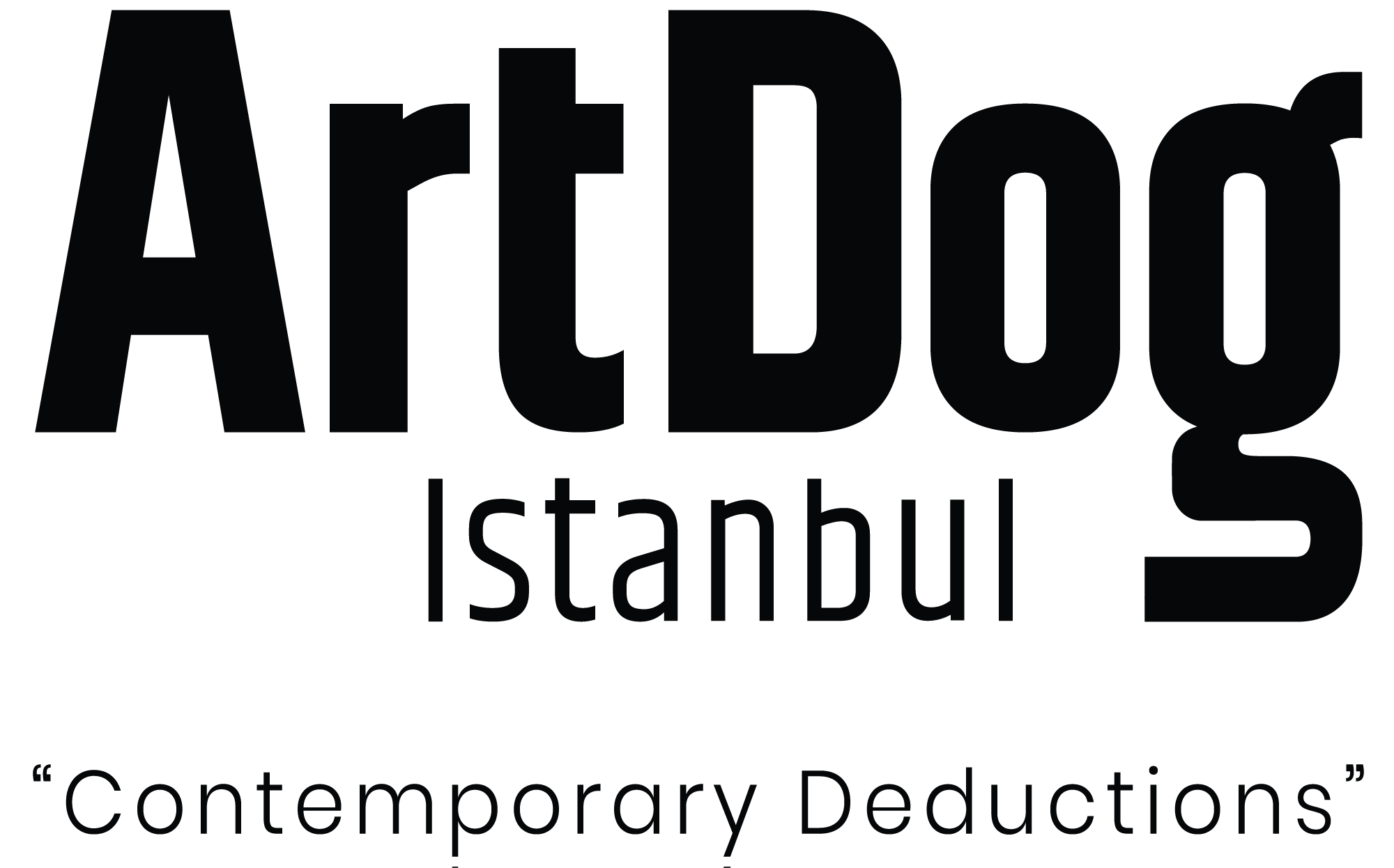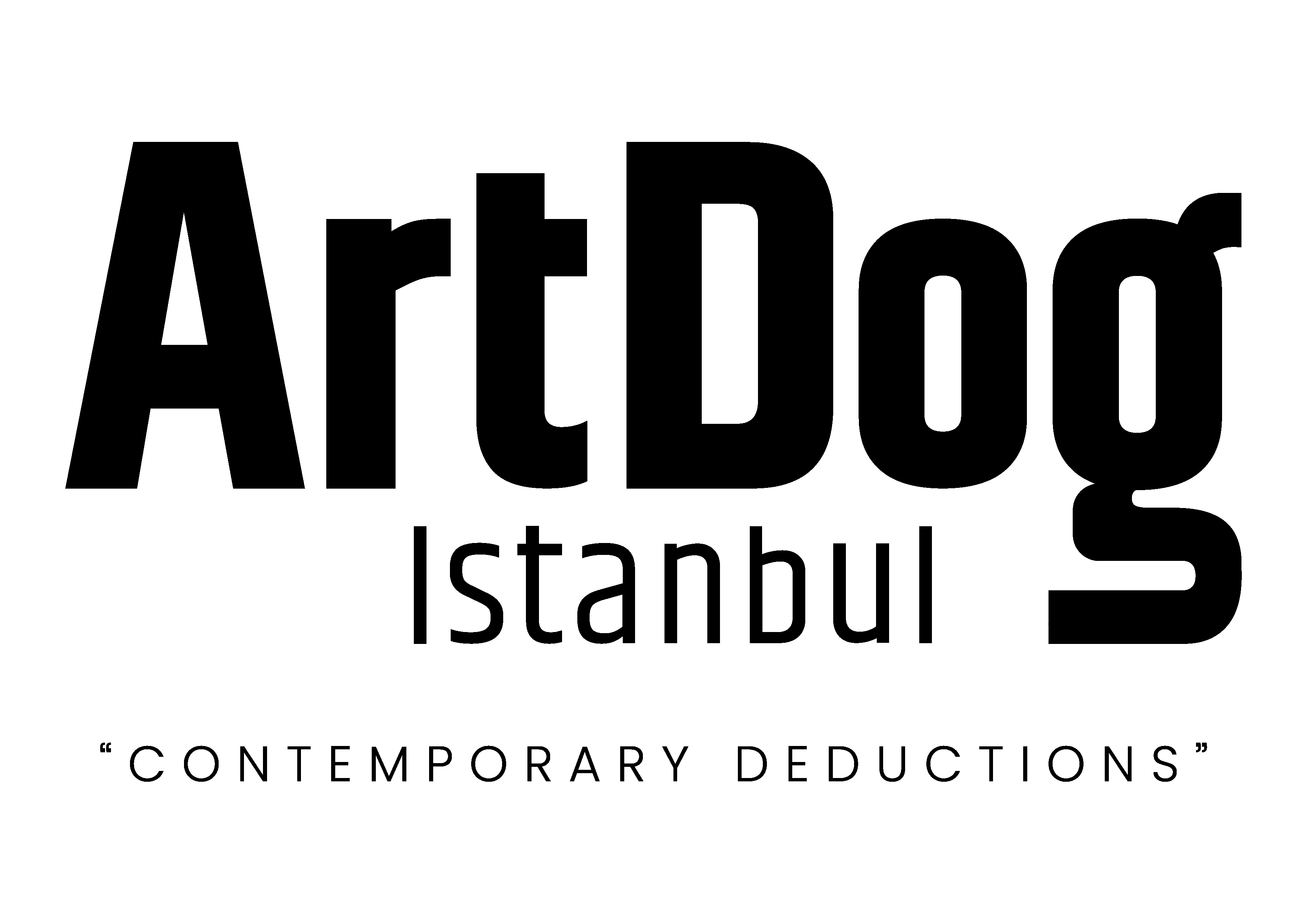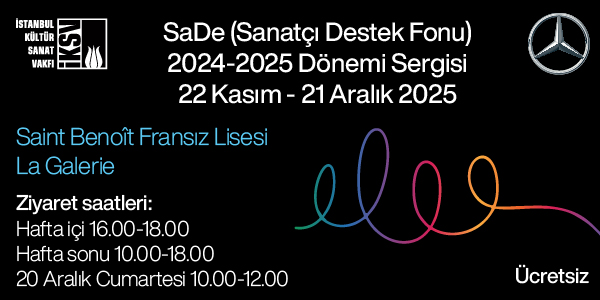“To be alive is to be moving, not simply to occupy a place. Movement is a vital process of engagement with the environment, in which identity is formed through journeys and encounters.”- writes anthropologist Tim Ingold. Movement, as he insists, is a mode of becoming. And it is this expansive definition of movement as a historical force and a personal, biographical impulse that shapes InOdyssey, an exhibition curated by Bengü Gün, Gözde Altun and Murat Balcı at Campbell Works in London.
The title InOdyssey evokes Homeric voyages across the seas and equally points toward an “Inner Odyssey” of self-discovery. Murat Balcı, one of the curators, observes: “Migration turns into an inner journey after ‘arrival.’ InOdyssey focuses on the stories of the individual’s identity and the world it creates as it migrates to a new universe.” This dual motion across land and through the psyche forms the exhibition’s emotional and conceptual core. Each work speaks to the complex experience of being in transit: between languages, identities, temporalities, and systems of belonging.
Placed in London, a city historically shaped by its entanglement with empire and exchange, the exhibition repositions the capital not just as a destination, but as an in-between place where past and future collide, and where new subjectivities are continually created. Co-curator Bengü Gün captures this interplay: “InOdyssey is a journey woven through spirals and echoes. Along the way, each encounter leaves a mark, like footprints in wet sand. This exhibition brings together these moments of unexpected crossings in shared territories.”
One of the first works encountered in the exhibition comments this theme of inner and outer movement through both its form and point of view. Presented as a floor-level video loop, a video performance Foam by London-based Turkish artist Özgül Arslan is viewed from an overhead angle, deliberately denying the viewer access to the performer’s face. This visual distance withholds identity to universalize the gesture, drawing attention away from the individual and toward the labor and repetition.
In the video, a figure in a white garment moves across a dark surface. Her gestures, first urgent and almost aggressive, begin to soften, forming circular, fluid traces from a foam she spreads on the floor. This tension between erasure and emergence, between the cleaning away and the creation of something momentary and fragile, serves as an allegory for the migrant condition. There is no fixed center, no stable identity, only repetition of the actions in motion, disappearance and reappearance. Yet within this abstraction, a kind of resistance emerges.
In the context of InOdyssey, this work explores how identity is not just carried but performed, dissolved, and sometimes reclaimed in mundane acts, often under the watchful gaze of systems that refuse to acknowledge it.
Where Arslan’s work engages with anonymity and gesture, works of Malak Mattar, an artist from the Gaza Strip, offer direct addressing that embody confrontation and resilience. In We Do Not Want You, a woman in a hijab fixes her gaze on the viewer, her finger extended in an accusatory manner. Behind her, the phrase that gives the work its title is inscribed across the background in bold strokes. She is calling out the structures of power and exclusion.This rare act of direct address disrupts the exhibition’s contemplative tone. It rejects the aestheticization of suffering and refuses to frame identity in comfortable terms. Instead, it almost asks: who is looking, and from where?
Alongside this declarative work is Gaza is a Phoenix, a mixed media piece that unfolds like a psychic map of destruction and rebirth. Fragmented scenes echoing the chaotic multiplicity of Bosch’s compositions are all coexisting in a landscape of trauma. And yet, rising through the debris, a bird emerges, reborn through flame. It is both a phoenix and a refusal to be annihilated.
Together, these two works challenge viewers to move beyond empathy and into recognition of the ongoing violence, of the ways in which histories are inscribed onto bodies and landscapes, and of art’s ability to both testify and transcend.
We move further into a more intimate register with Ukrainian-born artist Liza Jesse, whose work offers a subtle, emotionally textured countercurrent. Her video piece Ya tebe pokudayu | /’m Leaving You unfolds as a fragile constellation of short-lived moments—home videos, everyday rituals, and half-heard conversations captured during time spent with her family in Western Ukraine in 2024 and performative readings and dance filmed in London between 2024–2025.
Lebanese-American painter and poet Etel Adnan once wrote in her own odyssey book “In the Heart of the Heart of Another Country”: “Contrary to what is usually believed, it is not general ideas and grandiose unfolding of great events that impress the mind during times of heightened historic upheavals, but rather the uninterrupted flow of little experiences, observations, disturbances, small ecstasies, or barely perceptible discouragements that make up day-to-day living.”
Jesse’s video speaks with this sentiment precisely. A memory has this quality of imperfect, of rhythmic and nonlinear, exactly through those qualities the work is urging the viewer to pause and witness. But it also invites us to contemplate the impossibility of fully articulating what it means to leave.
The journey continues inward and across contested terrain with My Sweet Home, 1st Floor and 2nd Floor, a two-part animation video by Fatoş Irwen. These spectral visual poems set in a half-ruined, uninhabited house appear deceptively quiet: a bird sings, a bush stirs, and yet, the absence of human figures resounds louder than presence.
Irwen’s work draws from the intimate and politically charged landscape of Suriçi, Diyarbakır, where her life unfolded. In 2017, she was imprisoned in Diyarbakır Prison for three years due to her political expression and activism—an experience that irreversibly shaped her relationship to space, silence, and the body. The home she animates is not only a metaphor for a lost domesticity, but a symbolic stand-in for confined physical and psychological spaces that seek to erase.
The house, though crumbling, becomes a mnemonic architecture with each floor representing fragmented narratives of survival and recollection. It emerges as a haunted archive of womanhood, silence, and endurance. The home in her animations is charged with unseen lives, past conversations, feeling homely and at the same time handling the burdens of survival under political pressure.
Yet these works resist nostalgia and victimhood as they are felt more like meditations on fragility and refusal to forget. They balance delicately between the personal and the structural, creating space for stories that would otherwise remain unspoken or buried beneath rubble.
At the heart of the main exhibition room stands Open Loom (2025), a large, custom-built weaving frame, its wooden arms stretching like open arms. This participatory installation by British-Afghan artist Ghafar Tajmohammad offers a visual and tactile center to the exhibition where one can observe, but also contribute. Visitors are invited to sit down and weave into the cotton warp, adding their own threads to the slowly growing tapestry over the course of the show.
Tajmohammad, whose practice explores how cultural traditions shift within diasporic realities, uses the loom to turn private rituals into shared ones. The practice of rug-weaving is often carried out in domestic interiors and is passed down generationally. And here it is made public, collective, and improvisational. Open Loom becomes a material metaphor for continuity and change, for the network of memory and new belonging.
It also evokes a sense of returning to warmth. There is something in this act of sitting together, of making with one’s hands, that carries the warmth of walls, of voices weaving stories. This central installation grounds the entire exhibition in an atmosphere of simultaneously homecoming and departure. The process of weaving together becomes a practice of remembering, of leaving traces, of claiming space while recognizing how identities, like tapestries, are always unfinished, always shaped by those who come before and after.
As a curator myself who has also navigated several migrations—geographical and intellectual—these questions resonate on a personal level. My most recent relocation was not driven by necessity but by a personal curiosity to engage with the land of my familial roots. As a curator, my work is marked by continual movement. From the outside, this often appears as a kind of nomadic existence—perceived as rootless and lacking a centered core or fixed values.
Yet such interpretation lacks a complexity of understanding. Movement does not always signal instability, just as stillness does not guarantee rootedness or clarity. There are many shades between dislocation and grounding. What is often overlooked is how one can carry an inner compass, even while in motion, how values, commitments, and standards travel with the body and mind. The curatorial lens, too, can be migratory without being disoriented; it can seek, adapt, and respond, while still holding to its ethical and conceptual ground.
All over InOdyssey cleverly ties together emotional registers of displacement together with intellectual contemplations of the notion itself. Belonging and estrangement, joy and grief, resistance and being in transit are brought into a space where these layered states can coexist. There is nostalgia to it, certainly but also anticipation. As we move forward constantly remaking ourselves.
June 2025 at Campbell Works, London, INODYSSEY brings together the voices of eight international artists and three curators in the exploration of stories of migration, memory, and belonging. Coinciding with Refugee Week and supported by the Arts Council England, the exhibition features multidisciplinary works by Aya Haidar, Deniz Pasha, Fatoş İrwen, Ghafar Tajmohammad, Güler Ates, Liza Jesse-Kats, Malak Mattar, and Özgül Arslan. Curated by Bengü Gün, Gözde Altun.









